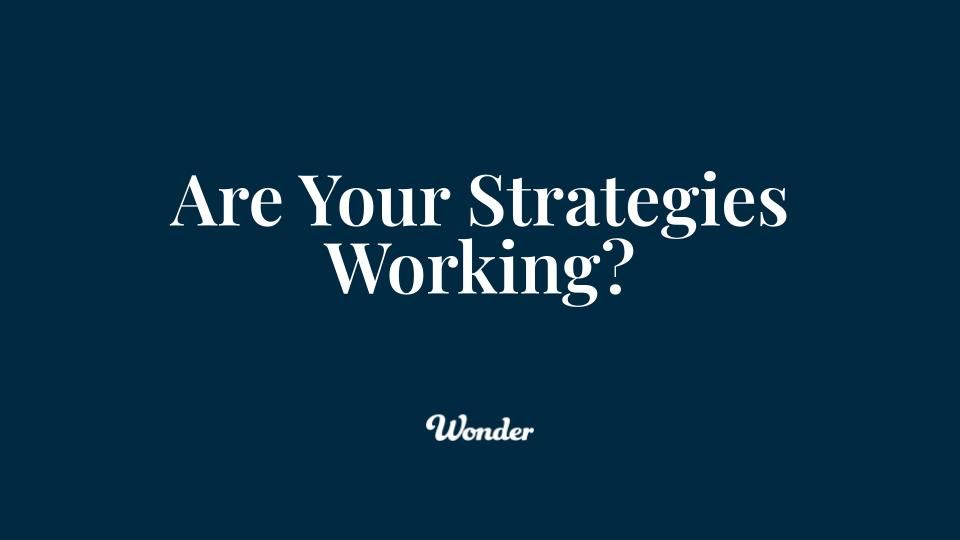Meant to B2B: Why We’re Wired for Business-to-Business Marketing
Jami Mullikin • June 4, 2025
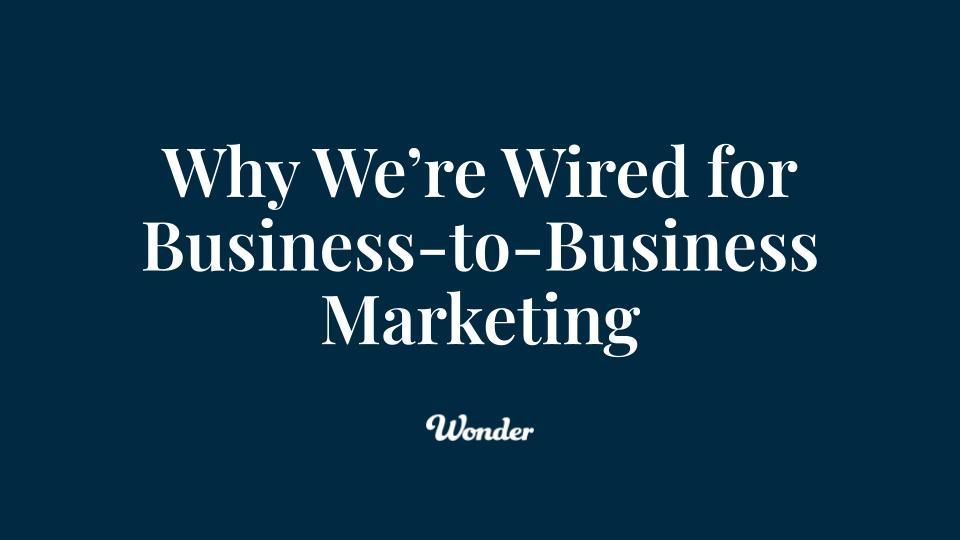
If you're leading marketing inside a business-to-business (B2B) company, chances are you're navigating more complexity than most people realize.
You’re building brand and pipeline. You’re enabling sales and educating the market. You’re aligning product, service, and delivery around a story that has to hold up across industries, personas, and platforms. And you’re doing it all inside a long, relationship-driven sales cycle that takes time, buy-in, and trust.
This isn’t about selling sneakers or soda on TikTok. You’re selling something that’s often expensive, technical, and hard to understand without a conversation. That’s what makes B2B different.
And that’s exactly why we love it.
B2B Marketing isn't a category—it's a mindset
B2B Marketing isn't a category—it's a mindset
It’s about thinking long. Playing smart. Supporting relationships that close deals over quarters, not clicks. You’re not trying to win attention. You’re trying to win trust. And the tools it takes to do that look a little different.
• You need content that educates and converts
• Systems that guide and qualify
• Campaigns that connect to real pipeline
• A brand that actually means something—internally and externally
It also means knowing your real opportunity isn’t always new leads. Some of your best prospects are your current customers. They already trust you. They’re already using your product or service. And they’re likely the fastest path to expansion—if you keep them informed, supported, and engaged.
That’s why we believe customer marketing should be part of every B2B strategy. When your customers understand where your business is going, your prospects take notice too.
And then there's the B2B Brand Story
And then there's the B2B Brand Story
Most B2B companies are selling a portfolio. Matrixed products. Services layered by verticals. Different value props for different buyers. And without a clear brand platform to pull it all together, it can feel like you’re marketing in fragments.
Your sales team starts customizing the story. Your partner team starts rewriting it. And the clarity you need to scale starts to fade.
Brand isn’t fluff. In B2B, brand is the reason to choose. It’s what makes you distinct when your prospects are choosing between five vendors who all sound the same.
So what do you need in a B2B Marketing Agency?
So what do you need in a B2B Marketing Agency?
You need a B2B marketing agency, and system, that are built for the way your business actually operates. One that:
• Honors the relationship at the center of every sale
• Supports the pipeline, not just the top of the funnel
• Makes room for complexity, but builds clarity anyway• Treats your customers like your next big deal
That’s the work we care about.
We built Wonder to serve companies who live in the world of B2B, high stakes, and long cycles. We’ve been in the channels. We’ve worked in the systems. We’ve sat at the table where marketing has to prove it’s more than a cost center.
Our Next 90™ Marketing Operating System
exists to give B2B leaders a framework that creates focus and results inside the 90-day rhythm of EOS®. It’s not about making things flashy. It’s about making them work.
If you’re living in the B2B world, we’re right there with you.
Because we weren’t just built for this.
We were meant to B2B.
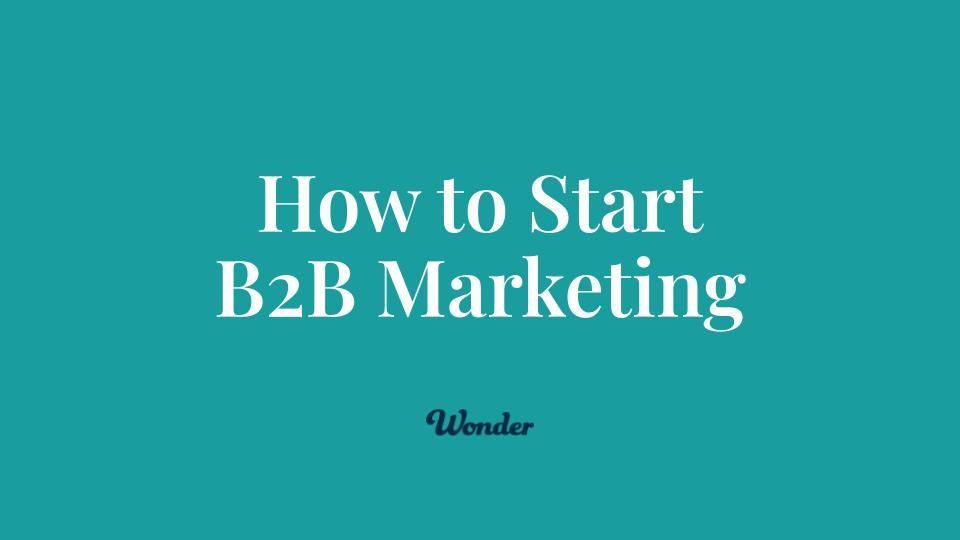
Starting a B2B marketing program can feel overwhelming. With so many tactics and platforms to choose from, knowing where to begin is often the hardest part. From selecting the right channels to aligning with sales, the early stages can make or break your campaign. That's where Wonder comes in. We help businesses get up and running in market quickly and effectively, often within the first 30 days.

Let’s just call it like it is. We live in the Age of Distraction. Slack messages. Email threads. Meetings about meetings. Threads to read to know if you were supposed to read them. It’s easy to mistake movement for progress. But the real breakthroughs? The real clarity, traction, and transformation? They come when you carve out time for deep, uninterrupted work. That’s where the magic of a clarity comes in. That’s the power of a Clarity Break. What Is a Clarity Break? In the language of EOS (Entrepreneurial Operating System), a Clarity Break is time you intentionally schedule to step away from the day-to-day and think. Not react. Not multitask. Just think. No meetings. No inbox. No distractions. You block the time. You find a quiet space. You bring a notebook. And you give yourself permission to wrestle with the real questions: What’s working? What’s not? Where are we stuck? What needs to change? You don't need to have an agenda. You just need space. Why It Works Clarity Breaks work because they shift your mind from urgent to important. You’re not trying to check something off a list. You’re trying to understand what belongs on the list in the first place. It’s like cleaning your windshield after driving through a rainstorm. Same road. Different view. In the past few years, I’ve built the discipline of taking regular Clarity Breaks. Some short. Some long. And every time I do, I walk away with more clarity, stronger decisions, and renewed energy to lead. Problems I’ve Solved in Clarity Breaks This isn’t theory for me. These are just a few of the things I’ve worked through. Sometimes in a coffee shop, sometimes in my home office, sometimes in a cabin on a mountain where I can see for miles. Personally, the mountains are simply good for my soul. Proven Processes EOS teaches us to document the way we work. But that doesn’t happen in the chaos of back-to-back meetings. In a Clarity Break, I’ve outlined and refined the processes that drive consistency in our delivery at Wonder. Core Processes Big decisions about how we operate need space. And space is what Clarity Breaks create. I’ve mapped the foundational ways we serve clients with my notecards and flow spread across the floor. Value Propositions The best messaging doesn’t come from brainstorming with 10 people in a room. It comes from thinking deeply about what your ideal client actually values. That happens in quiet. In stillness. In reflecting on the true needs of others. Offers Too Good to Refuse The best offers come from clarity, not complexity. When I stop trying to be clever and get laser-focused on solving a real problem in a simple way, that's when irresistible offers show up. Sales Commission Structure Even tactical, structural issues, like how to design a comp plan that drives the right behavior, have found their way to clarity in the space of my Clarity Break. Get clear. Clear the calendar, that is. The Clarity Break is one of the simplest, most overlooked tools in EOS — and one of the most powerful. It’s also deeply personal. No one schedules it for you. No one demands it. But if you make the time, protect the space, and show up ready to think, you will find what’s next. If you're running a business and haven't created a rhythm with Clarity Breaks, this is your nudge. Start small. Block an hour. Bring a notebook. Leave the laptop. If you're not running on EOS, but the idea of creating intentional space to think resonates, give it a try. The best leaders think. And the best thinking happens when you finally stop doing everything else for everyone else.
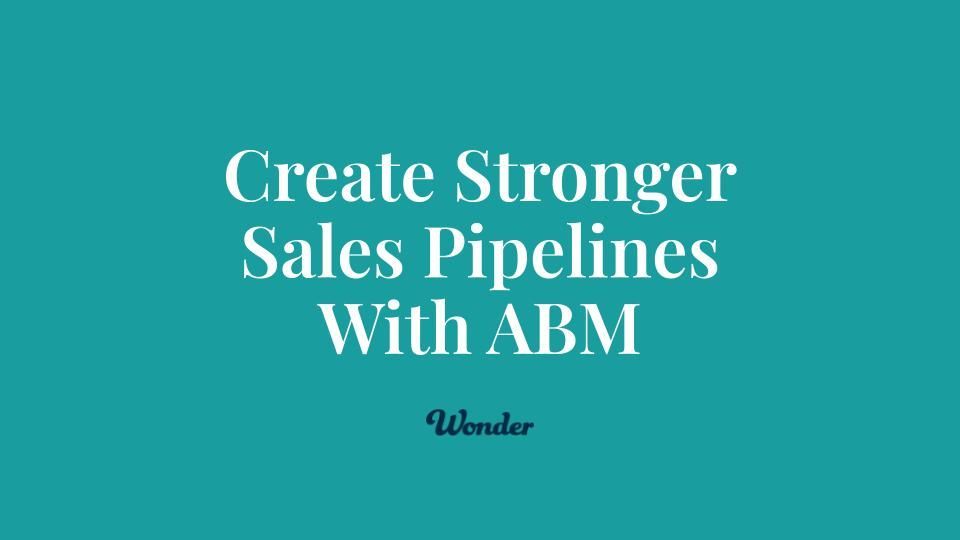
In B2B sales, the traditional approach has been clear-cut: marketing drives awareness and generates leads, while sales takes those leads and closes deals. But the reality is more complex. Buyers don’t move through a predictable funnel, and purchase decisions aren’t made in isolation. This is where Account-Based Marketing (ABM) changes the game. Rather than focusing on individual leads, ABM aligns sales and marketing around target accounts—companies that fit the ideal customer profile (ICP). It’s a dynamic, data-driven approach that helps teams work together to engage prospects throughout their entire buying journey. Account-Based Marketing (AB M): Not a New Idea, But a Better Execution The concept of ABM has been around for years—previously known as “Key Account Marketing.” What’s different today is the power of digital data and technology. With a combination of first-party and third-party data, advanced targeting, and personalized messaging, ABM enables teams to: Identify the right accounts with precision Engage the full buying team within each organization Deliver the right message at the right time based on where each prospect is in their decision-making process By focusing marketing efforts on accounts that sales has already prioritized, ABM ensures that resources are spent on the highest-value opportunities. Why ABM Works Better for B2B Sales 1. B2B Buying Decisions Are Made by Committees Very few B2B deals are decided by a single person. Instead, purchase decisions often involve 8 to 13 stakeholders across different roles: Initiators - those who start the buying process Researchers - team members gathering vendor options Influencers - stakeholders pushing for features they favor Decision-makers - leaders signing off on the purchase Traditional marketing often targets just one individual, but ABM engages the full buying committee, ensuring the right people receive relevant content and messaging throughout their journey. 2. ABM Uses Data and Technology to Deliver Meaningful Engagement One of ABM’s biggest advantages is its ability to meet buyers where they are—not just with broad awareness campaigns, but with targeted content tailored to their stage in the buying process. Using marketing automation, CRM data, and intent-based signals, ABM delivers messaging that speaks to the unique priorities of each stakeholder—whether they’re just starting research or narrowing down vendors. The result? Higher engagement, shorter sales cycles, and stronger conversion rates. Account-Based Marketing: A Smarter Way to Drive B2B Growth ABM isn’t about generating more leads—it’s about generating the right opportunities. By aligning sales and marketing around a focused list of high-value accounts, engaging full buying teams, and leveraging data-driven insights, ABM helps B2B companies win more deals with the right customers. If you’re ready to refine your sales and marketing strategy with ABM, let’s start the conversation. Let’s talk.
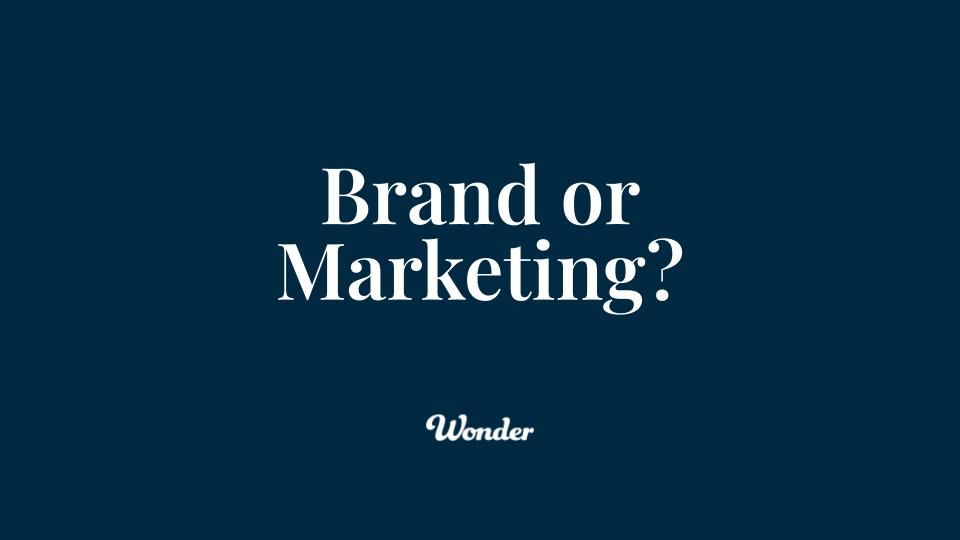
Are we a brand agency or a marketing agency? At Wonder, we’re a strategy, marketing, and media firm that helps visionary B2B brands grow. We break down the key differences between brand strategy and marketing execution, explain our Next 90™ Marketing Operating System, and share what to look for when hiring a brand agency. Plus, take our free Brand Health Assessment to see if your brand needs a strategic refresh.
